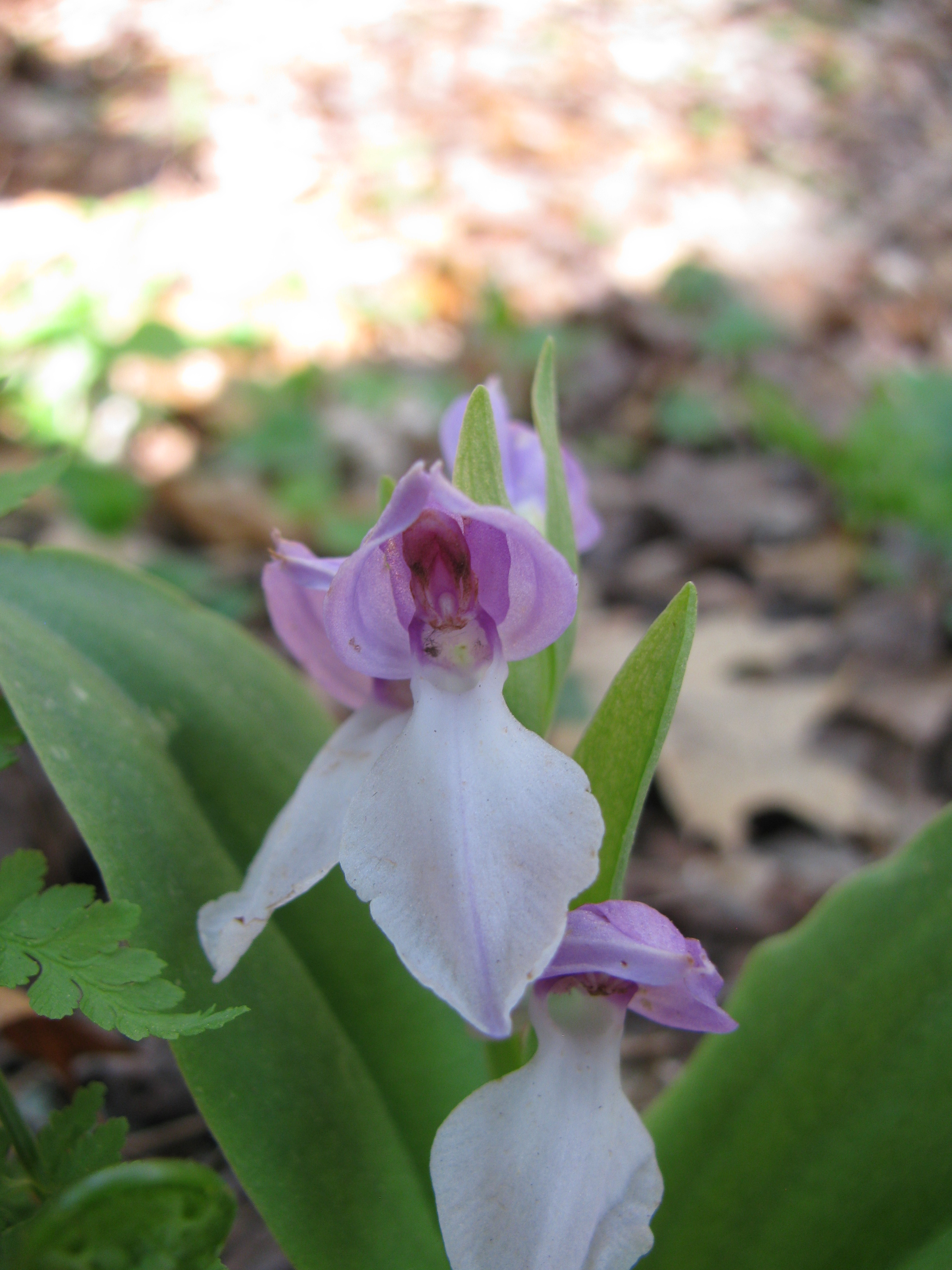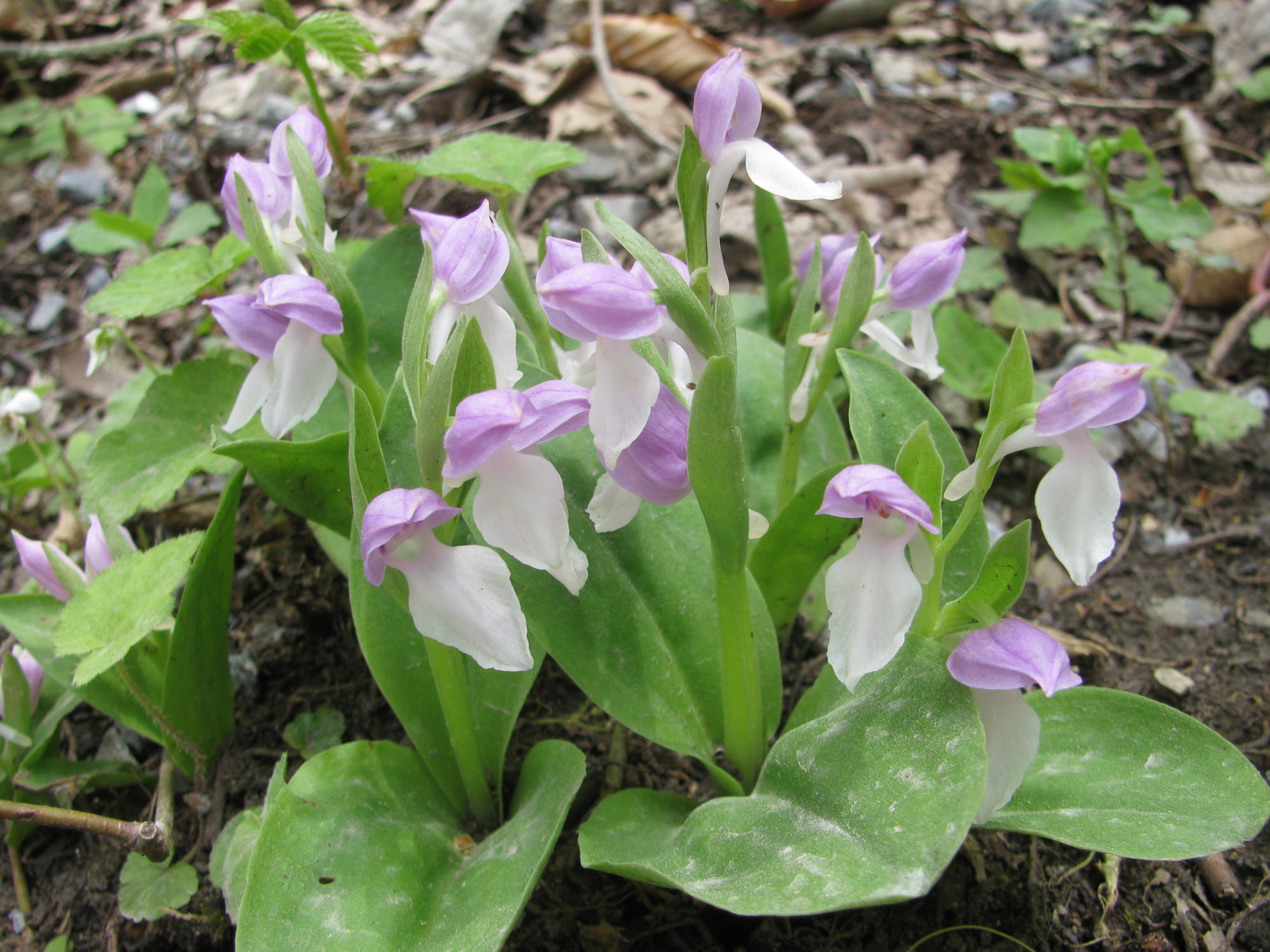My friends and I drove down to the Great Smoky Mountain National Park last month to be part of the annual Spring Wildflower Pilgrimage. The Smokies are one of the most diverse places in North America, so it was exciting to see the variety of life there. I saw over 90 plant species in total and 20 species I had never seen before! The trip was totally worth it, even though we drove through the night to get there.
One plant that was on my ‘to see’ wish list was the showy orchis (Galearis spectabilis). This beautiful plant is in my favorite family, the Orchidaceae or orchid family. This sprawling family has many species that have unique habitats, floral structures and pollination strategies. Most orchids require relationships with soil fungi (mycorrhizae) to live so they should never be dug up or moved. Orchids in the US can be hard to find as most are small and many live deep in swampy areas. Naturally, hunting a new species of orchid is one of my favorite pastimes!
On our first hike in the Smokies, I kept my eyes peeled for orchids. Luckily, we found our first showy orchis a few feet up the trail. And after the hike, I realized that there was an orchid growing a few feet from our car’s front tire!

A beautiful showy orchis growing by the parking lot of a Smoky Mountain trailhead (Galearis spectabilis, Orchidaceae)
The showy orchis’ scientific name describes it well. Galearis comes from the word galea, which means helmet. This describes the shape of the flower, which does looks very ‘spectabilis’ (remarkable in Latin). No other orchid has flowers with a blush pink helmet and a pure white lip. These orchids live in the eastern US in rich forests (Nelson and Lamont, Orchids of New England and New York, 2012).

The showy orchis is easily identifiable by its pink and white petals (Galearis spectabilis, Orchidaceae)
Orchids have their male stamens and female pistils are fused together to form a column. Pollen is produced on the column in sticky masses called pollinia. These get carefully stuck on pollinators so they perfectly match up with a flower of the same species. The most ‘showy’ and characteristic orchid floral structure is the lip or labellum, a modified petal at the base of the flower. These lips are important for attracting pollinators, as they can mimic flowers that produce rewards (nectar or pollen) or even mimic female insects to trick males into mating (Nelson and Lamont, Orchids of New England and New York, 2012).

A view from below of a showy orchis flower. The pink helmet is made up of fused petals and sepals. It protects the fertile column, the reddish purple structure in the helmet. On the column, you can see where the two pollinia were. It seems like this flower already had a pollinator visit as the pollinia are gone (Galearis spectabilis, Orchidaceae)
The showy orchis flowers early in the spring, before the trees have fully leafed out. The flowers have a nectar-filled spur and are important nectar sources for early emerging insects, such as queen bumblebees. The orchids also have large bracts at the base of each flower. These act as miniature leaves, producing sugars for the growing seed pods during the summer (Spira, Wildflowers & Plant Communities of the Southern Appalachian Mountains & Piedmont, 2011).

You can see the nectar spur pointing down on the right of the center flower (Galearis spectabilis, Orchidaceae)

A beautiful bunch of showy orchis plants! (Galearis spectabilis, Orchidaceae)
